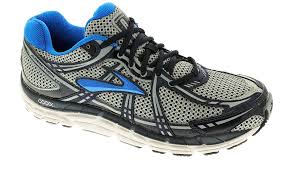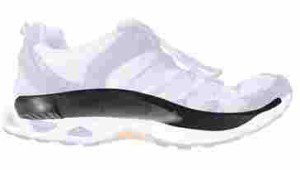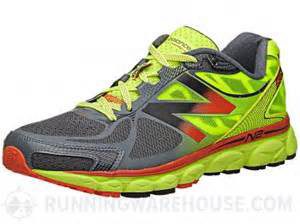What is the Best Running Shoe for Bad Knees?
Before we start talking about the best running shoes for bad knees it is critical to understand that “bad knees” can mean a lot of things. For example, just a few of conditions that might cause “bad knees” could be:
- Knee pain due to poor alignment of the lower extremity. For example, if you have wide hips the angle of the thigh to the lower leg can cause knee pain.
- Knee pain due to an over-pronated foot. When the foot rolls in excessively it can cause the kneecap to be pulled off line and cause knee pain.
- Arthritis of the knee
- Torn ligaments or meniscus
And these are just a few examples of the many conditions that can cause knee pain.
Our recommendation is to get a full work-up of your knee and be sure you have an accurate diagnosis of the cause of your knee pain before you try to find the best shoes and certainly before you run. Never run through knee pain – if your knee hurts, stop running. There are other workouts you can do in the meantime and you can find here in our guide to exercising when you have a lower extremity injury.
Best Running Shoes for Knee Pain
Assuming you have a diagnosis and have been cleared to run, below are some of our recommendations on the best shoes for specific knee problems. Keep in mind that running puts a great deal of force on the knees so the right shoes not only allow you to run longer, but also reduce your chance of pain and injury. Proper shoes, however, are only part of an overall treatment plan to treat knee pain.
While proper shoes can help reduce some types of knee pain, shoes are only a part of an overall treatment plan.
Best Running Shoes for Runners Knee (Patello-femoral Pain Syndrome)
The knee condition where the proper shoe can make the most difference is probably “runners knee” – also known as patell0-femoral pain syndrome (PFPS). In this condition the knee cap moves offline to the outside (lateral) so the knee cap no longer tracks correctly on the femur. This is often related to having excessive pronation. Overpronation causes the foot to pronate (flatten) and the leg to rotate in toward the other knee.
Runners knee occurs when there is excess stress on the knee area due to overpronation, misalignment, and overtraining. Runners can help prevent these conditions by wearing stability shoes that encourage the knees to stay in proper alignment and support the arches.
For example, one of our most recommended shoes for those with knee pain relalted to over-pronation of the feet is the Brooks Addiction.The  Addiction has good torsional stability, a stable heel and a midsole that resists collapse. Together these make for a shoe that is excellent at helping to reduce the pronation that contributes to knee pain. We also like the Addiction because it has a shape that fits a wide variety of feet and it is available in multiple widths.
Addiction has good torsional stability, a stable heel and a midsole that resists collapse. Together these make for a shoe that is excellent at helping to reduce the pronation that contributes to knee pain. We also like the Addiction because it has a shape that fits a wide variety of feet and it is available in multiple widths.
For more choices in anti-pronation shoes like the Brooks Addiction you can download our free recommended shoe list. We’ve picked only running and exercise shoes that are designed to keep knees, feet, and ankles healthy.
Another recommendation for those with PFPS due to excessive pronation is to use a supportive arch support in your 
running shoe. I often recommend the P3 Sport Orthotic. Of the prefabricated orthotics I have evaluated, this is the one that is closet in construction to a quality custom orthotic.
Best Running Shoes for Pain on the Inside of the Knee
If you have pain on the inside of the knee you absolutely must get a proper diagnosis before you run. One of the more common conditions associated with inside (medial) knee pain is arthritis of the medial compartment of the knee. If you have arthritis present here running is probably not the best activity for you. At the very least don’t run on it unless you have a doctor’s ok.
In some situations, however, there is pain on the inside of the knee simply because there is too much pressure going through the joint there. In this situation, the correct shoes may help.
Force through the inside of the knee is increased (in most cases) when the foot in turned in (so the soles face each other). This is called supination and is the opposite of pronation. So in most cases if you have pain on the inside of your knee a anti-pronation shoe like the Brooks Addiction is exactly the opposite of the type of shoe you want. In this situation you should look for a shoe that allows some extra pronation and prevents excessive supination.
There are not many of these “anti-supination shoes” on the market. The one I recommend the most is the New Balance 1080 series.  The 1080 is cushioned on the inside but firmer on the outside and has the best ability of any running shoe we have seen to decrease force though the inside of the knee.
The 1080 is cushioned on the inside but firmer on the outside and has the best ability of any running shoe we have seen to decrease force though the inside of the knee.
Although this shoe can help with inside of knee pain, there is more evidence that proper wedging inside the shoe can be much more beneficial at reducing pain. Be sure to see a sports medicine podiatrist to work on proper wedging along with getting the right shoes. If you are in the Seattle area contact us for an appointment.
Best Running Shoes for Pain on the Outside of Knee
Again, make sure to get a proper diagnosis of your knee pain before trying to treat it and don’t run through the pain.
If you have pain on the outside of your knee and you do not have arthritis of the knee then using the proper shoes, orthotics and wedging has been shown to be helpful at reducing pain in some patients.
In order to reduce force through the outside of the knee you want to stop excessive pronation. Again, our recommended shoe for limiting excessive  pronation and subsequently reducing force through the outside of the knee is the Brooks Addiction. Also, as with inside of knee pain, outside of knee pain often responds well to specific types of wedging inside the shoe so find a sports medicine podiatrist to work with you on proper wedging and orthotics to further reduce force through the outside of your knee.
pronation and subsequently reducing force through the outside of the knee is the Brooks Addiction. Also, as with inside of knee pain, outside of knee pain often responds well to specific types of wedging inside the shoe so find a sports medicine podiatrist to work with you on proper wedging and orthotics to further reduce force through the outside of your knee.
If you have knee pain and are a runner, it’s also helpful to vary your running surfaces, such as running on soft dirt trails or grass. Also, if you are new to running and have bad knees, visit a running shoe store to get fitted by a shoe specialist.
Be sure to download our recommended shoe list before you buy a new pair of shoes. The shoe list is available here.
- Do I Have to Keep Wearing My Orthotics if My Feet Feel Better? - November 29, 2019
- Flip Flops and Sandals for Ball of Foot Pain | Podiatrist Recommended - August 5, 2018
- How To Strengthen the Arch of Foot - August 31, 2017

I am probably a bit of an anomaly – hehe – but….
When I lived in the Caribbean for a few years, I stopped wearing shoes – almost everywhere (it wasn’t uncommon there actually)…
Anyway – while I certainly built up callouses, the one thing I did notice was that all my knee, back, arch and shin pain went away entirely. It wasn’t until I returned to ‘the real world’ and had to start wearing shoes again that the pain came back (not severe pain, just noticeable sometimes).
The one thing that was actually awkward initially when wearing shoes again – specifically runners – was the forward angle of the shoe (slight wedge to the sole). It was very noticeable and at first I sometimes felt like I’d fall forwards. Unfortunately shoes with a flatter sole tend to have less of a bevel on the heel which when walking briskly can be a bit annoying….
Again – this may just be me, but without shoes, my feet (and arches), shins and calves all seemed much stronger – I can’t help but wonder if possibly the lack of external support allowed them to naturally strengthen.
(of course I’m not recommending anything here – these are just my observations – I am NO professional)
These are really great points.
What is interesting is that around 2009 the book Born to Run came out and there was a big movement toward barefoot running or minimalist shoes. There were also a lot of claims that running barefoot or minimalist was the “best” way to run for all or most runners.
One great thing that came from this movement was a LOT of research on running shoes and running form. Up to that point there had been very little. The fact is that the claims that the barefoot running enthusiasts were making were completely unsubstantiated. They had no good evidence that barefoot running was better (and they still don’t). On the other hand those advocating heavier motion control shoes (me included) also had no evidence.
Well, what has been found in the past 7 or 8 years is that there is no one best way to run nor is there a best type of shoe. Some people do better in minimalist shoes and others do better in motion control. Most people are somewhere in between these two extremes. A caveat is that there are some people who should not use minimalist shoes. Anyone who is overweight or prone to forefoot injuries such as metatarsal stress fractures should go with a more neutral or control shoe.
What has been found in multiple studies is that it is best for most runners to use a variety of very different shoes. This reduces the repetition that tends to lead to injury.
It has also been found that there is no one best foot strike. Some people are natural heel strikers and others are natural midfoot or forefoot strikers. Most studies show to go with what is natural.
To me it sounds like you are doing what is right for you. Keep it up!
I like the part that you say to use a few kinds of shoes. I bought 6 different kinds of running shoes in the course of four months just because i liked having it that way. Now reading your comment makes me feel like my instincts were right. I run every morning 5-7 miles and use every day a different pair. I am a 67 year old man.
I born with high arch, a bit bow knees (very little), and dance ballet 15 years. I have torn my ankle LCL. Now I have bad knees: patellofemoral pain syndromme and.pain in medial part of knees while walking (they said that I put my body weight not at center of knee but rather to medial side). I have just got chondroplasty due to chondral lesions.
What kind of sport shoes are the best for me?
That’s going to depend on several factors. First, if your feet pronate (flatten) excessively then you would do best with a stability or motion control shoe. If your feet are fairly stable you would likely do better with a more neutral shoe. A good podiatrist with expertise in biomechanics and sports medicine can analyze your gait and give you recommendations on specific shoes and orthotics or arch supports that will decrease stress on the damaged portions of your knees. We have a list of podiatrists who we think do a good job here
Thank you so much for all the information!! Super helpful!